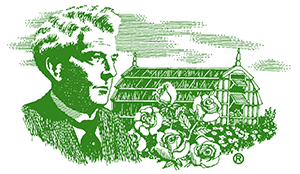Of the over 800 new plants introduced by Luther Burbank in his lifetime, more than 100 were plums, prunes or plumcots. Some of these were imported fruits, which he introduced in his catalogs, but most were new fruits, the result of Burbank’s unceasing experiments with hybridizing, also known as cross-pollination.
By the time Luther Burbank settled in California, nurserymen in the Sacramento area listed many varieties of plums in their catalogs, some still known today (e.g. the Damson and Green Gage.) Eastern nurserymen offered good prices to California growers to buy their trees, but shipping was expensive and the trees didn’t always withstand the long trip by boat. This inspired Californian nurserymen to grow their own trees and develop new varieties. A great expansion of plum orchards took place in many areas from northern Shasta County down to San Diego before Burbank’s arrival in 1875.
In the 1870s, the first of many plums were imported to California from Japan. Luther Burbank introduced the Chabot plum, a Japanese import, in 1881. By 1883 he became active in seeking out other Japanese plums, first as introductions in his catalogs and then to develop new hybrid varieties. Burbank ordered a dozen so-called “blood plums” from Japan in 1883, but they arrived dead. When another shipment came in 1885, Burbank reported that they were “12 sturdy, healthy plum seedlings.” Two of these were very successful: one he called the Burbank and the second was a plum with red flesh that Burbank called the Satsuma, “in honor of the province whence it was derived.” About 10 varieties of plums came from Japan to Burbank that same year.
Enthusiastic about the possibilities the Japanese plums offered, Burbank began experimenting with crosses of them with other plums, sometimes crossing a Japanese plum, such as the Satsuma, with several other varieties to achieve sweeter, juicier, more abundant and hardier plums. He purchased his large experimental Gold Ridge farm in Sebastopol just after the 1885 successful shipment of Japanese plum seedlings; soon it was filled with his experimental plums and other fruits. He said, after acquiring this property, that “a new phase of lifework began.”
Burbank continued to work with hybridizing plums until his death in 1926. The most famous varieties are the award-winning Santa Rosa plum and the Wickson plum. Of the 16 posthumous patents Burbank was awarded, 6 were for plums.

